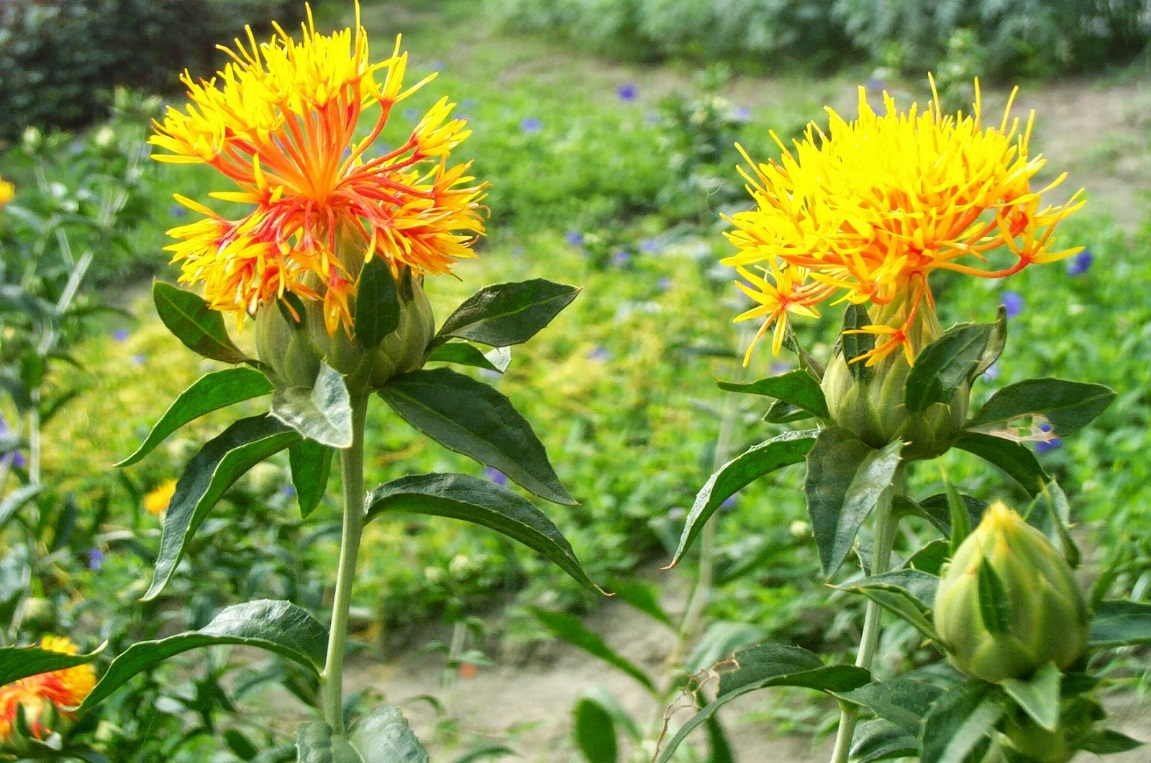|
|
|
|
|

Benefits Of Safflower (Carthamus Tinctorius) For Health
Chinese herbal medicine practitioners recommend the safflower flowers to encourage menstruation and also treat abdominal pains. In addition, the safflower flowers are also said to be effective in cleaning and healing open wounds and bruises. They are also used as a remedy for measles. On the other hand, Anglo-American herbalists use the flowers to treat fevers and different types of skin disorders, including rashes. At the same time, the raw oil extracted from the safflower seeds is said to function as an excellent purgative.
Safflower seed oil is used for preventing heart disease, including “hardening of the arteries” (atherosclerosis) and stroke. It is also used to treat fever, tumors, coughs, breathing problems, clotting conditions, pain, heart disease, chest pain, and traumatic injuries. Some people use it for inducing sweating; and as a laxative, stimulant, antiperspirant, and expectorant to help loosen phlegm. Safflower oil is also considered to be a good remedy for acne prone skin, reducing dryness of the skin and nourishing skin with moisture.
Women sometimes use safflower oil for absent or painful menstrual periods; they use safflower flower to cause an abortion.
Consumption of safflower helps in boosting immune system, thereby giving strength to fight against diseases and infection. Safflower paste is applied on the skin to provide relief from mild skin inflammations, rashes, and so on.
A teaspoon of safflower kernels, when mixed with six shelled almonds and honey is used for treating constipation. The same dose has also been beneficial for young, weak and pregnant women.
Safflower is a very effective aphrodisiac and hence, helps in the treatment of sexual debility. For this, powdered safflower seeds should be mixed with pistachio nuts, honey and almonds. This mixture when taken with milk, every day before going to bed, improves sexual vigor and thickens semen.
Infusion of the flowers when combined with honey and consumed helps in treating asthma. A mixture of ½ teaspoon of powdered safflower seeds and one tablespoon of honey helps in treating bronchial asthma. The mixture should be consumed once or twice a day.
Chemical analysis of the linoleic safflower oil has shown that it encloses nearly 75 per cent of linoleic acid. The concentration of linoleic acid in safflower oil is much higher than that compared to corn, soybean, and cottonseed, peanut or even olive oils. This variety of safflower is mainly used for producing edible oil products like salad oils and soft margarines. Significantly, researchers still argue over the issue that oils having high concentration of polyunsaturated acids such as linoleic acid aid in reducing high blood cholesterol and averting associated heart and circulatory disorders. All said and done, the oil extracted from the safflower seeds are still thought to be high value edible oil and, ironically enough, the public concern regarding this topic has made the safflower a vital vegetation for plant oil and the oil itself all the more acceptable.
|
|
|
|
|
|
|